Over the past 45 years, three acres of pasture in Nottinghamshire have been transformed into a garden packed with plants. Margaret Swindin was born in Worcestershire and as a child she loved the wildflowers in the surrounding countryside. When she first arrived at The Beeches with her husband James, it took time to clear the ground thoroughly: “As soon as we started, I was keen to reach the retaining wall – originally a ha-ha – at the end of the vicarage garden next door; it was the ideal place to begin planting.” Several trees were felled, revealing glorious, panoramic views over the surrounding countryside, and garden making began in earnest.
Read more about the garden and its plants below.
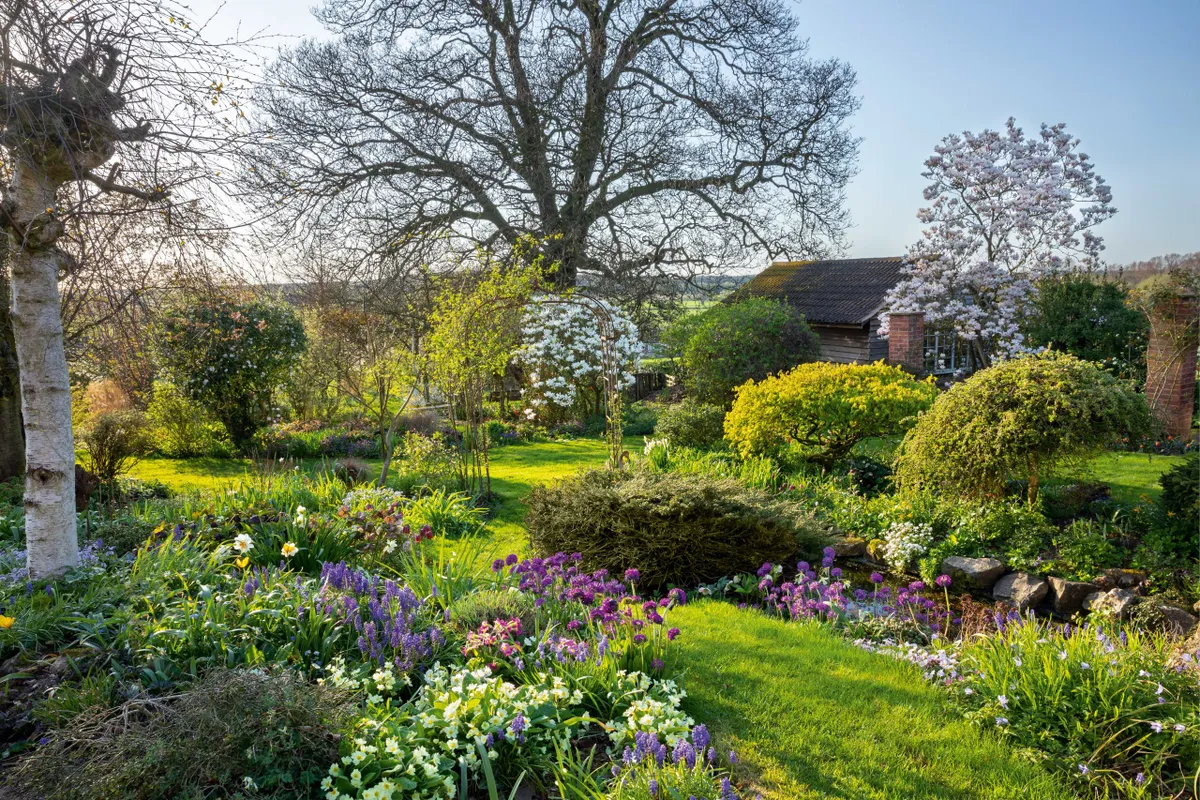
Drumstick primulas, primroses and muscari cover the soil under blossoming magnolia and cherry trees and the stately filigree of an English oak, Quercus robur.
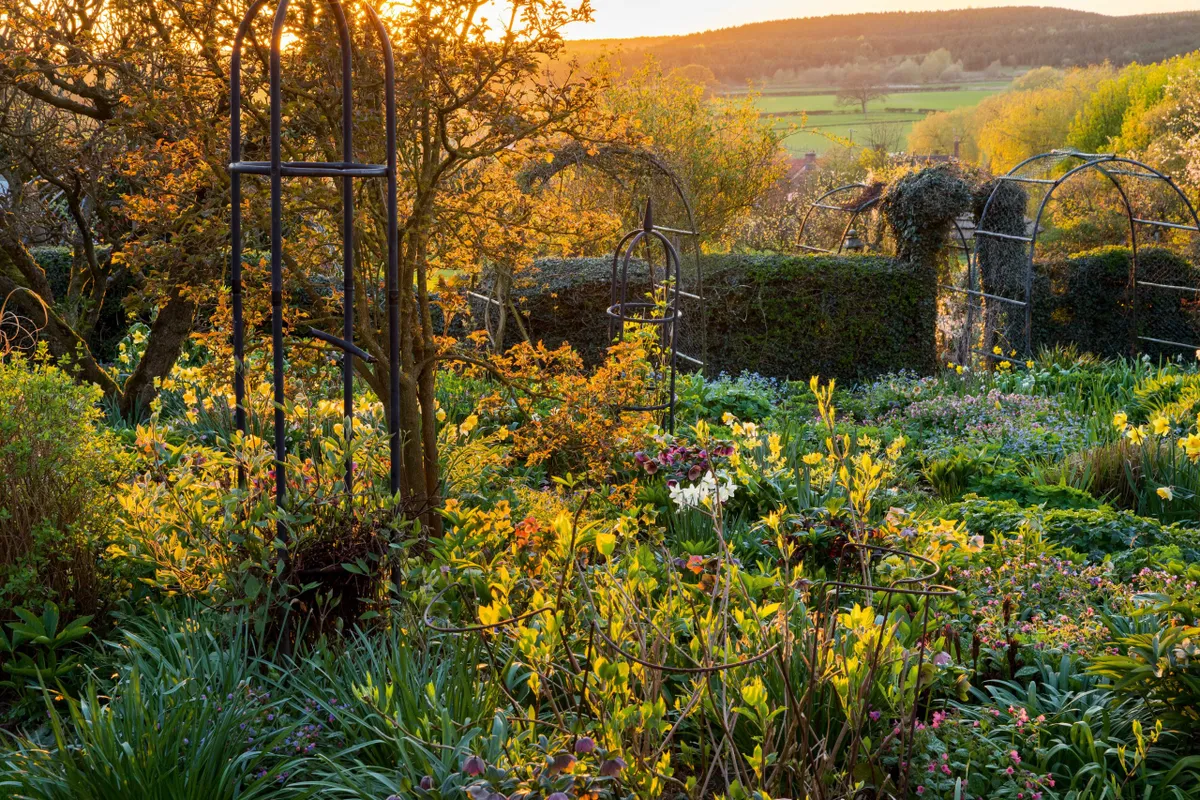
The character of the garden is transformed when the soft light of a spring dawn floods the garden, highlighting the shape and form of emerging stems and fresh foliage. The richly textured planting of hellebores and pulmonarias creates a pleasing counterpoint to the borrowed landscape beyond.
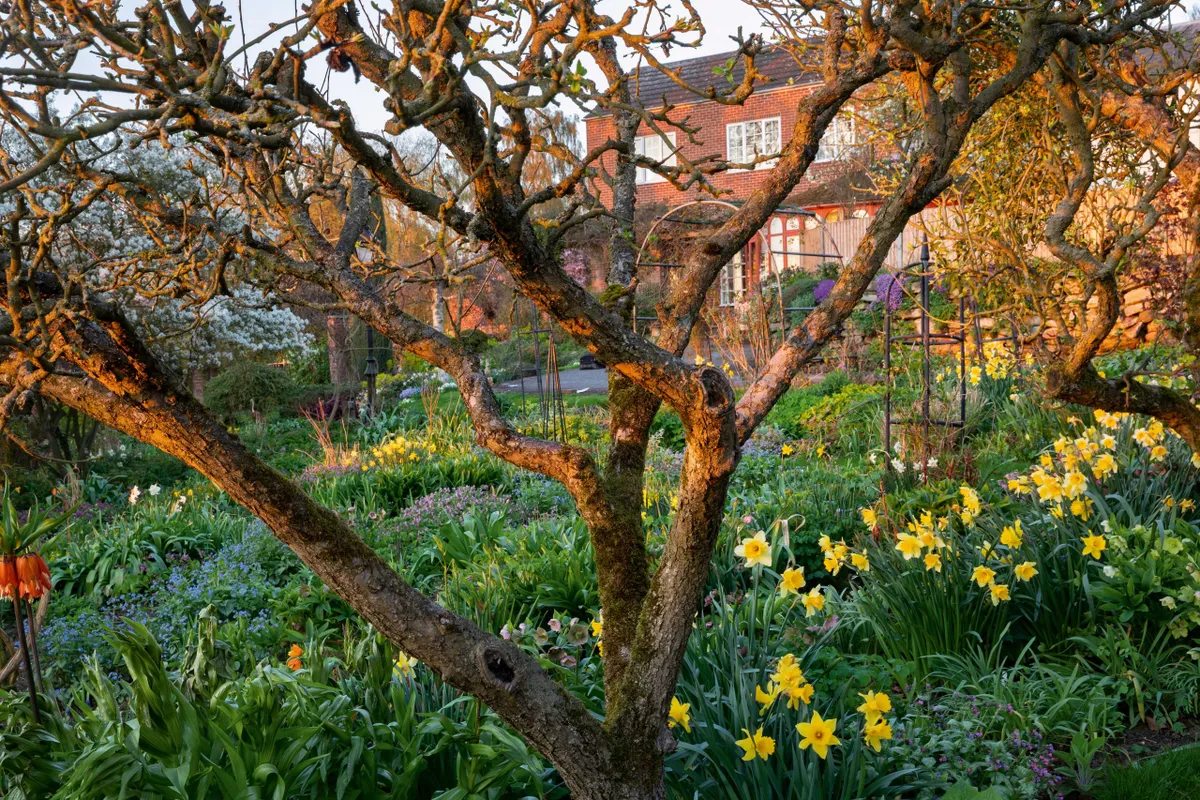
The emerging foliage of bulbs and herbaceous plants in myriad shades of green is illuminated by the joyful yellow blooms of narcissi and rusty-orange Fritillaria imperialis. The mossy boughs of apple trees and nearby plant supports add height and structure to this gradually evolving scene.
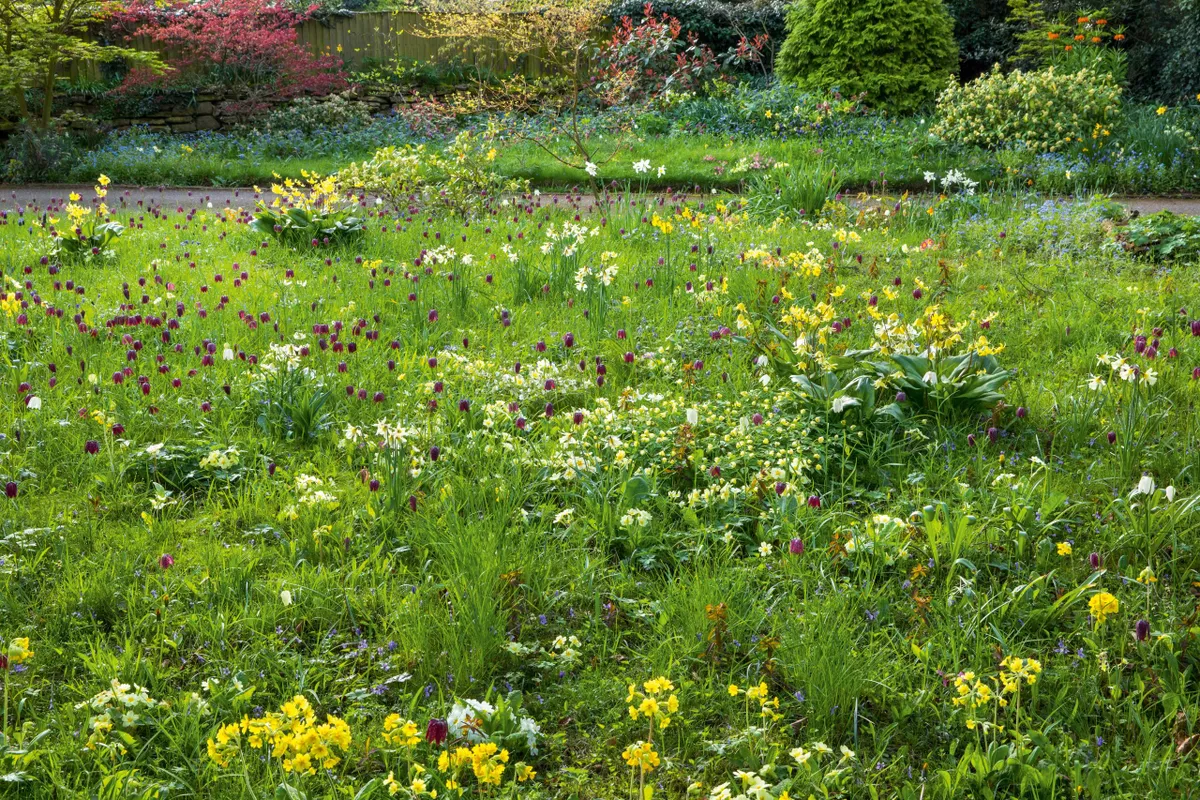
Fritillaries, narcissi, cowslips, bee orchids, primroses and white and blue anemones all self-seed in the rough grass below a beech tree, creating a millefleur, or tapestry of many tiny flowers, that changes subtly every year. The grass is cut and raked off in late summer, once all of the seeds have been shed.

Magnolia kobus is a flower-filled focal point in spring, as herbaceous plants and nearby climbing roses, trained over a wrought-iron arch, burst into early growth. The seat, in a shady spot, becomes the perfect place for contemplation in the sunnier days ahead.
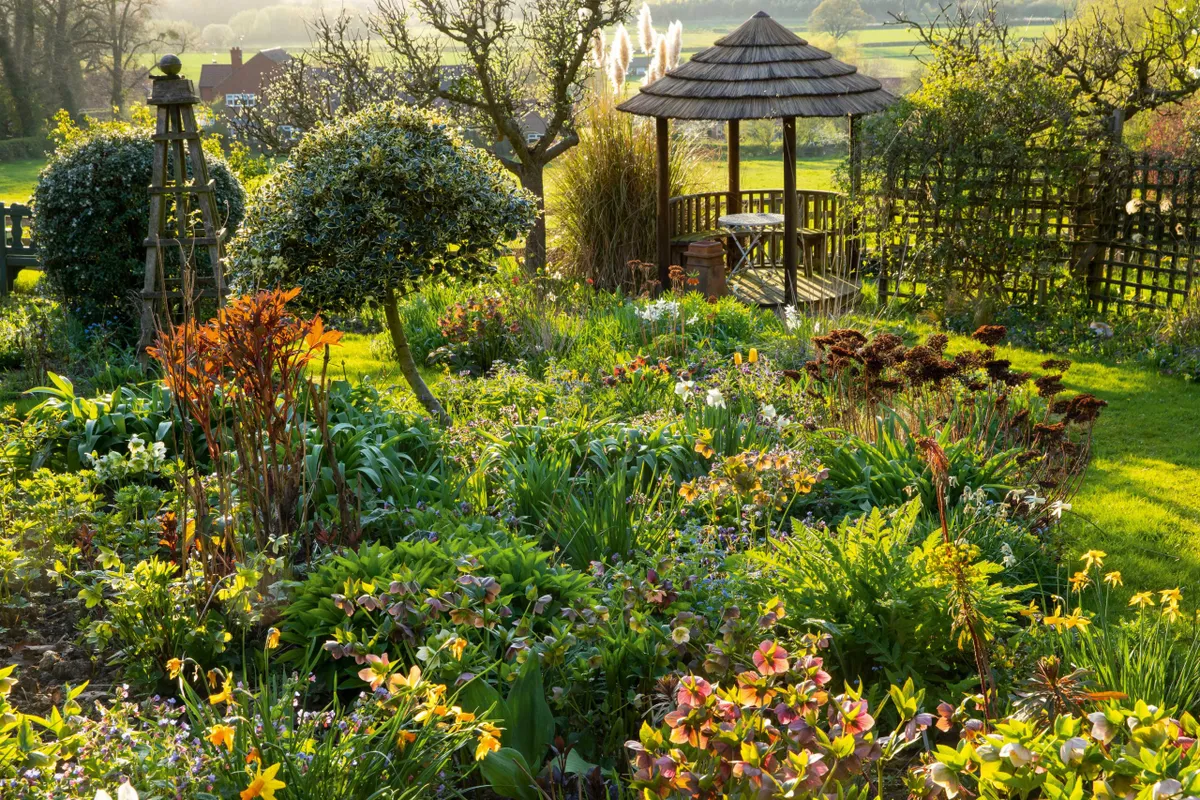
Early plant growth is faster in sunnier parts of the garden, away from the skeletal shadow of the giant oaks and beeches. Self-seeded hellebores and narcissi are followed later by polemoniums and alliums. Dense planting creates an attractive patchwork and weed-suppressing groundcover.
